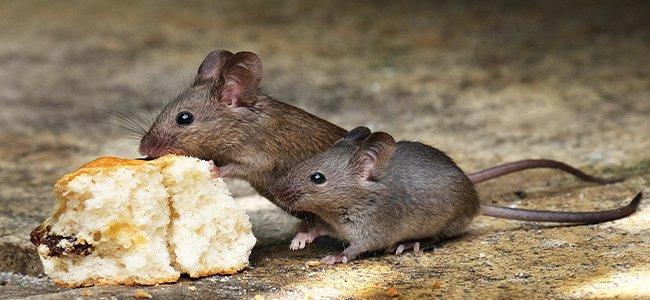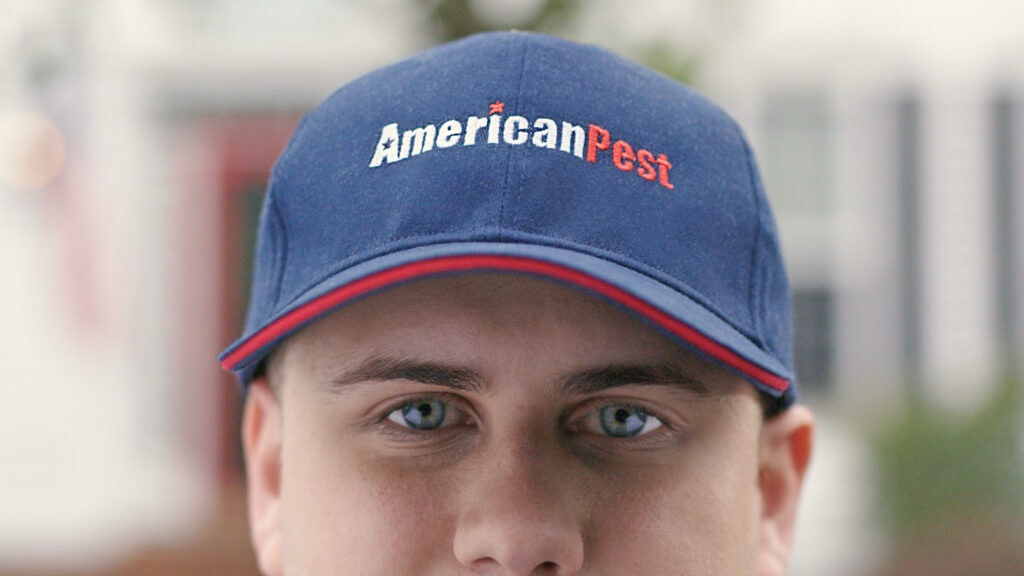Why is So Hard To Get Rid of Mice?

It started when you saw a black, rice-shaped pellet on your counter. Or perhaps it was the scratching sound in your walls that first alerted you to the problem, or the jagged hole you found in a box of cereal in the pantry.
Whatever the initial clue, it has recently become clear that something besides your family is living in your house.
If mice have gotten into your Maryland, Virginia or Washington D.C. home, you’ve probably already started taking steps to eliminate them, and you’re probably already discovering that getting rid of a mouse infestation is not as easy or simple as you thought it would be.
Here’s why is so hard to get rid of mice.
A Few Facts About Mice
There are several species of mice in Washington D.C., but the most common type to find in your D.C. home is the house mouse.
Unlike field mice that prefer the outdoors, house mice can survive outside, but they prefer to shelter inside buildings in dark, secluded areas. These areas can include attics, wall voids, basements, and more.
House mice are small rodents. Their size can vary from around 2 1/2 inches long to just under 4 inches long, and their tails are about the same length as their bodies.
They range in color from brown to dark gray but are usually a dusty gray with a cream-colored belly. House mice have round bodies, pointed noses, large ears, and small eyes.
As rodents, house mice have front teeth that never stop growing.
Because of this, they need to chew on things their whole lives to keep their teeth at a manageable length. When indoors, they’ll eat almost anything that humans eat, but they prefer grain-based products, such as cereals, as well as seeds and fruits.
House mice can breed at an astounding pace with females being able to give birth to up to half a dozen babies every three weeks. As social creatures, they group themselves into family units with a dominant male, many females, and fewer subordinate males.
The Dangers Of Mice
When mice get into your Washington D.C. home they bring many dangers along with them. The first danger has to do with their need for constant chewing.
As previously mentioned, mice have to gnaw on things regularly to keep their incisors at a manageable length. If they don’t chew, their teeth will keep growing until they are too long for the mice to handle them.
When mice get into your house, they will gnaw on anything they can find to keep their teeth filed down.
In fact, they might use their chewing skills to get into your house in the first place. Although mice only need an opening that is the size of the diameter of a dime to get into your house, if they find an opening that is smaller, they can easily make it large enough to squeeze through by gnawing away at the edges.
In this way, even the smallest cracks can be taken advantage of by an industrious mouse.
Once inside your house, a mouse’s chewing has just begun. In some cases, the chewing that mice do will be directly related to their work putting together a nesting area.
They might chew holes in sheetrock to access wall voids. They could chew through insulation to use it as nesting material. They’ll likely chew holes in boxes to inspect and use the contents inside, which they’ll also chew up. Any and all materials are susceptible to being destroyed.
Furthermore, mice commonly chew through pipe and ductwork, as well as wiring. This not only can cause water leaks and damaged heating and cooling systems, but it can also affect your electrical systems and be a serious fire hazard.
The chewing problem would be enough on its own, but that’s not the only danger that mice bring to Washington D.C. homes.
Mice can produce anywhere from 50 to 75 pelleted droppings per day. They will leave these wherever they travel, whether it be in their nesting area, in your cupboards, or on your countertops.
Mouse feces, as well as their urine, is contaminated with a number of dangerous pathogens that can cause a variety of illnesses. If your food becomes contaminated or you come in direct contact with mouse urine or feces, you could end up with salmonellosis, hantavirus, tularemia, lymphocytic choriomeningitis, or even the bubonic plague.
Mouse urine and feces can also trigger allergy and asthma symptoms in some people. If droplets of urine or dried particles of feces get into the air, they can be inhaled and lead to problems for sensitive individuals.
Illnesses can also be spread through mouse saliva or scratches. If you come in close enough contact with a mouse to be bitten or scratched, you could end up with an illness because of it.
When mice get into your house, they also bring various parasites inside with them. These include ticks, fleas, lice, and tapeworms. All of these parasites can cause a host of additional dangers for your family and pets.
The Problem With Mouse Traps
When most people spot a mouse in their D.C. home, their first instinct is to buy a mouse trap or two to take care of the problem.
If you search the internet for mouse traps, you’ll find millions of results offering everything from the classic spring-loaded traps to fancy live traps to directions for homemade traps.
The possibilities are endless. But do mouse traps actually work?
If you set out a mouse trap, you’ll likely catch a mouse at some point. You might even catch more than one. However, to solve your mouse problem, you can’t simply rely on setting a trap.
For one thing, mice are much smarter than we give them credit for. As creatures that are cautious by nature, they won’t approach a trap with abandon. Instead, they will be extremely careful, especially if the trap is new. That said, they are inquisitive as well and will likely inspect the new item if it appears in their space.
Mice have been known to figure out ways to grab whatever bait is offered without triggering a trap. They also have very fast reflexes and are often able to get away even if they do accidentally trigger it.
If a mouse does trigger a trap while managing to get away, it is unlikely that they will make the same mistake twice. Instead, they will stay far away from the trap. Furthermore, if a mouse does get caught in a trap and you reuse the trap, other mice will be able to smell its former occupant and will keep their distance.
The biggest problem with mouse traps, though, is the fact that they are unlikely to ever take care of your entire mouse infestation.
Many people see one mouse in their house, catch one mouse in their trap, and think that’s the end of their problem. Other people find signs of a mouse infestation.
Perhaps they find droppings or damaged packaging in their pantry or hear rustling in their walls. They may catch a few mice and think the problem has been eliminated. Neither of these scenarios is realistic.
The truth is, if you see a mouse in your house or see signs of mice in your house, you likely have a larger infestation than you think. Because of how quickly mice breed, even if you discover the infestation in its early stages, it will quickly grow while you’re trying to stop it.
If one female mouse can have six babies every three weeks and new females reach maturity in as little as four weeks, it becomes easy to see how a small infestation can quickly become a large one.
When you look at all of these problems, it becomes clear that mouse traps cannot be the sole solution to your mouse infestation. Although they may help and can be part of the solution, they will not eliminate every mouse in your house.
If you’ve only been using mouse traps in your attempts to eliminate mice from your D.C. house, that is why you’re having a hard time being successful.
The Most Effective Form Of Mouse Control
For the most effective form of mouse control, you need a multi-pronged approach to eliminate current activity and prevent future infestations.
Attempting this on your own if you aren’t an expert in mouse behavior or elimination will not only be an exercise in frustration, but it could be dangerous for your health and safety and the health of your family.
Instead, get the help of the professionals at American Pest. As a top-rated pest control company in the Washington D.C. area, and with over 95 years of experience solving pest problems, we are skilled at treating, eliminating, and preventing mouse infestations.
Our approach to mouse control involves five steps:
1. We start by thoroughly inspecting your home and property.
2. We then seal off any entry points we find to prevent new mice from getting inside.
3. Rodent bait stations are then installed in strategic locations around the exterior of your home to keep populations down around your house.
4. We then use the most effective products and methods to eliminate the active infestation in your house.
5. Finally, we provide targeted follow-up visits to ensure the entire problem has been fully taken care of and that no new issues crop up.
If you have reason to believe that mice have gotten into your D.C. home or if you know that they’re present and have been having a hard time getting the mice out of your D.C. house, it’s time to call the experts at American Pest. We will fully eliminate your problem while taking steps to ensure a new infestation is prevented. Contact us to schedule your inspection.
Request Your Pest Control Estimate
Related Posts
Contact Us Today!
Do you need an estimate for service or have questions about pests? We’d love to hear from you!
Fill out the form and receive feedback today. For immediate service, please give us a call!
